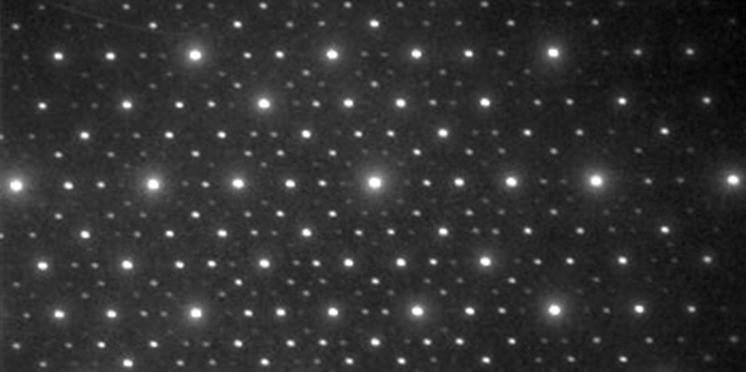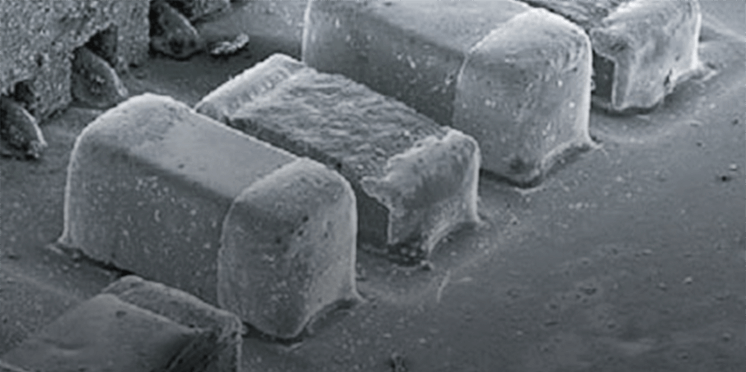デスキャン
デスキャン
de-scan
[目次:検出系]
入射電子線の試料への照射位置や照射角度によって光軸から外れた電子線を、2段偏向コイルにより光軸に振り戻すこと。デスキャンの用途は主に2つある。
1)電子線を試料上で広範囲に走査した場合、走査した周辺部では電子線が光軸から外れてしまう。この場合、光軸を中心としておかれているSTEMやEELSの検出器に対する電子線の位置や角度が光軸からずれる。
STEMの場合、試料のある走査点を通った電子線がSTEM検出器中心からずれると、その走査点でSTEM像の強度が本来検出されるべき強度よりも変化してしまう。
EELSの場合、試料のある走査点を通った電子線のEELS検出器へ入る位置や角度が変化すると、その走査点からのEELSスペクトルのエネルギー値が変化する。
これらの位置や角度ずれを抑えるために、結像系の2段偏向コイルを用いて電子線の走査と同期させて、試料を通過した電子線を光軸上に振り戻す。
2)プリセッション電子回折の場合、入射電子線を試料上の一点で歳差運動させるために、照射系の1段目の偏向コイルで入射電子線をある角度(最大~5°)に傾斜させ、2段目の偏向コイルで傾斜した電子線を光軸上に振り戻す。また、試料を通過した電子線も光軸から外れるため、結像系の2段偏向コイルを用いて、電子線を光軸と平行になるように振り戻す。これらの操作により、プリセッション電子回折図形が得られる。
De-scan means to bring the electron beam deflected from the optical axis back to the optical axis using a two-stage deflector coil, the deflection being caused by illumination position or illumination angle of the incident electron beam onto a specimen. De-scan is applied mainly to the following two cases.
1) When the incident electron beam is scanned over a wide area of a specimen, the electron beam can stray off the optical axis at the peripheral part of the scanned area. Then, the incidence position or the incidence angle of the electron beam to a STEM or EELS detector whose center is adjusted to the optical axis deviates from the axis.
In the case of STEM; if an electron beam passing through a scan point of the specimen deviates from the STEM detector, the STEM image intensity is varied compared with the correct intensity which should be detected.
In the case of EELS; if an electron beam passing through a scan point of the specimen does not run on the center of the EELS detector or runs obliquely to the optical axis of the detector, the energy value of the EELS spectrum cannot be correctly measured.
To avoid such an undesirable electron-beam position or angle to the STEM or EELS detector, a two-stage deflector coil in the image-forming lens system is operated synchronously with the beam scan to always bring back the electron beam to the center of the detector and/or parallel to the optical axis.
2) In the case of precession electron diffraction, to precess the incident electron beam onto a certain point on a specimen, a two-stage deflector coil in the illumination lens system is used. The first deflector coil tilts the incident electron beam to a certain angle (up to approximately 5°), and then the second deflector coil compensates the displacement of the tilted incident electron beam from the optical axis. Then, the electron beam passing through the specimen runs oblique to the optical axis. A two-stage defector coil in the image-forming lens system is used to bring back the electron beam to run on the optical axis. A precession diffraction pattern is obtained by such operation of the two-stage defector coils.
関連用語から探す
説明に「デスキャン」が含まれている用語






